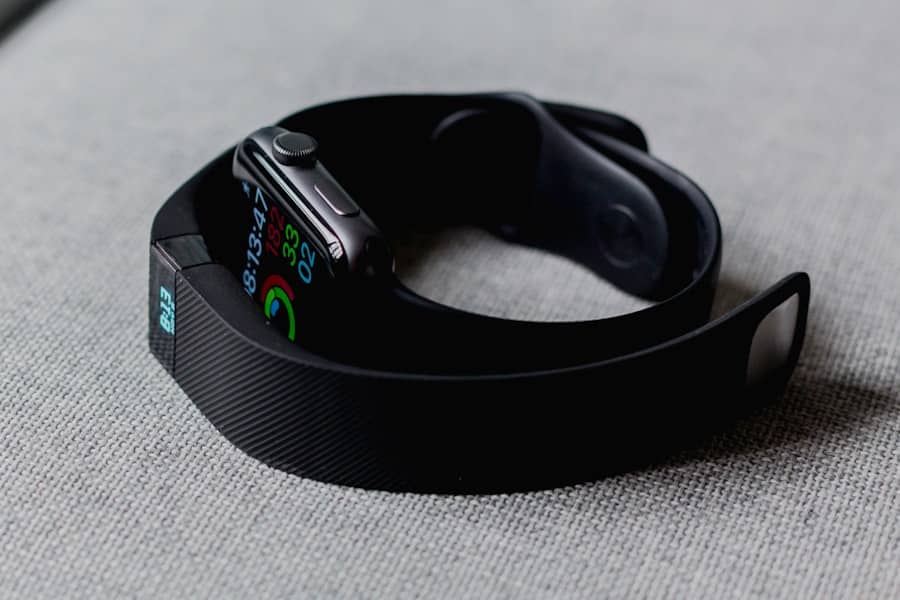In recent years, the prevalence of stress-related health issues has surged, becoming a significant concern for individuals and healthcare professionals alike. Factors such as the fast-paced nature of modern life, economic uncertainties, and the pervasive influence of technology have contributed to an environment where stress is not just common but often chronic. According to the American Psychological Association, a substantial percentage of adults report experiencing high levels of stress, which can manifest in various physical and mental health problems.
Conditions such as anxiety disorders, depression, cardiovascular diseases, and even autoimmune disorders have been linked to prolonged stress exposure. The World Health Organization has also recognized stress as a global health epidemic, emphasizing the urgent need for effective management strategies. The rise in stress-related health issues is not merely anecdotal; it is supported by a growing body of research that highlights the physiological and psychological toll of stress.
For instance, chronic stress can lead to elevated cortisol levels, which have been associated with weight gain, hypertension, and a weakened immune response. Furthermore, the mental health implications are equally alarming, with studies indicating that individuals under significant stress are more likely to develop mood disorders and engage in unhealthy coping mechanisms such as substance abuse. As society grapples with these challenges, understanding the multifaceted nature of stress and its impact on health becomes increasingly critical.
Key Takeaways
- Stress-related health issues are on the rise, impacting individuals’ physical and mental well-being.
- Stress can significantly affect daily life, leading to decreased productivity and overall quality of life.
- Wearable technology plays a crucial role in monitoring stress levels and providing valuable insights for individuals.
- Stress-tracking wearables offer benefits such as real-time stress monitoring and personalized recommendations for stress management.
- There is a growing demand for personalized stress management solutions, driving the integration of stress-tracking wearables into wellness programs.
The Impact of Stress on Daily Life
The effects of stress permeate various aspects of daily life, influencing not only individual well-being but also interpersonal relationships and workplace dynamics. Stress can lead to decreased productivity and motivation, making it difficult for individuals to perform at their best in professional settings. For example, employees experiencing high levels of stress may struggle with concentration, leading to mistakes or missed deadlines.
This not only affects their performance but can also create a ripple effect within teams, as colleagues may need to compensate for the decreased output. The workplace environment can become tense and unproductive, further exacerbating stress levels among employees. Moreover, stress can significantly impact personal relationships.
Individuals under stress may find themselves more irritable or withdrawn, leading to misunderstandings and conflicts with family members or friends. The emotional toll of stress can create barriers to effective communication, making it challenging for individuals to express their feelings or seek support from loved ones. This isolation can perpetuate a cycle of stress and emotional distress, as individuals may feel they cannot share their burdens with others.
As such, the impact of stress extends beyond the individual, affecting social networks and community dynamics.
The Role of Wearable Technology in Monitoring Stress Levels

In response to the growing awareness of stress-related health issues, wearable technology has emerged as a valuable tool for monitoring stress levels. Devices such as smartwatches and fitness trackers are equipped with sensors that can measure physiological indicators associated with stress, including heart rate variability (HRV), skin conductance, and even sleep patterns. By providing real-time data on these metrics, wearables enable users to gain insights into their stress responses and identify potential triggers.
For instance, a smartwatch may alert a user when their heart rate spikes during a stressful meeting, prompting them to take a moment to breathe or step away. The integration of biometric data into wearable technology has revolutionized how individuals approach stress management. Unlike traditional methods that rely on subjective self-reporting, wearables offer objective measurements that can help users understand their physiological responses to stressors.
This data-driven approach allows for more informed decision-making regarding lifestyle changes and coping strategies. For example, if a user notices a consistent increase in heart rate during specific activities or interactions, they can take proactive steps to modify their environment or behavior to mitigate stress.
The Benefits of Stress-Tracking Wearables
Stress-tracking wearables offer numerous benefits that extend beyond mere monitoring; they empower users to take control of their well-being. One significant advantage is the ability to track patterns over time. By analyzing data collected over days or weeks, users can identify trends in their stress levels and correlate them with specific events or lifestyle choices.
This longitudinal perspective can be invaluable for understanding how different factors—such as work demands, social interactions, or sleep quality—affect overall stress levels. Additionally, many wearables come equipped with features designed to promote relaxation and mindfulness. For instance, some devices offer guided breathing exercises or meditation prompts based on real-time stress data.
These interventions can help users develop healthier coping mechanisms and reduce reliance on maladaptive behaviors such as overeating or substance use.
This holistic approach not only addresses immediate stress but also fosters long-term resilience.
The Demand for Personalized Stress Management Solutions
As awareness of the impact of stress on health continues to grow, there is an increasing demand for personalized stress management solutions tailored to individual needs. One-size-fits-all approaches are often ineffective; what works for one person may not resonate with another due to differences in lifestyle, personality, and coping styles. This recognition has led to a burgeoning market for customizable wellness solutions that leverage technology to provide personalized insights and recommendations.
Personalization in stress management can take many forms, from tailored mindfulness programs based on user preferences to customized exercise regimens that align with individual fitness levels and goals. Wearable technology plays a crucial role in this personalization by collecting data that informs these recommendations. For example, if a user consistently reports high-stress levels during specific times of day or after particular activities, a wearable could suggest adjustments to their schedule or offer targeted relaxation techniques during those peak times.
This level of customization enhances user engagement and increases the likelihood of successful stress management.
The Integration of Stress-Tracking Wearables into Wellness Programs

The integration of stress-tracking wearables into corporate wellness programs represents a significant shift in how organizations approach employee well-being. Companies are increasingly recognizing that employee health is directly linked to productivity and overall organizational success. By incorporating wearables into wellness initiatives, employers can provide employees with tools to monitor their stress levels and promote healthier lifestyles.
For instance, some organizations have implemented wellness challenges that encourage employees to use wearables to track their physical activity and stress levels over time. These challenges often include incentives such as rewards for achieving specific health goals or participating in group activities that promote team bonding and reduce stress. Additionally, employers can use aggregated data from wearables (while respecting privacy concerns) to identify trends within their workforce and tailor wellness programs accordingly.
This proactive approach not only supports individual employees but also fosters a culture of health within the organization.
The Future of Stress-Tracking Wearables
The future of stress-tracking wearables is poised for significant advancements as technology continues to evolve. Innovations in artificial intelligence (AI) and machine learning are expected to enhance the capabilities of these devices further. For example, future wearables may be able to analyze complex patterns in user data more effectively, providing deeper insights into individual stress responses and offering predictive analytics that anticipate potential stressors before they occur.
Moreover, the integration of wearables with other health technologies—such as telehealth platforms—could create a more comprehensive approach to mental health care. Users might receive personalized recommendations not only from their wearables but also from healthcare professionals who can access real-time data on their patients’ stress levels and overall well-being. This collaborative model could lead to more effective interventions and support systems tailored to individual needs.
Considerations for Choosing the Right Stress-Tracking Wearable
When selecting a stress-tracking wearable, several factors should be considered to ensure it meets individual needs effectively. First and foremost is the accuracy of the device’s sensors; users should look for wearables that have been validated through scientific research for measuring physiological indicators related to stress accurately. Features such as heart rate variability monitoring and sleep tracking are essential components that contribute to a comprehensive understanding of one’s stress levels.
Another important consideration is user interface and compatibility with other devices or apps. A wearable should be easy to navigate and provide clear insights into collected data without overwhelming the user with information. Additionally, compatibility with smartphones or other health apps can enhance the overall experience by allowing users to integrate their data into broader wellness routines seamlessly.
Since wearables are often worn throughout the day and night, choosing a device that fits well with one’s lifestyle—whether it’s stylish enough for professional settings or comfortable enough for sleep—is crucial for consistent use. By carefully evaluating these factors, individuals can select a stress-tracking wearable that aligns with their goals and enhances their overall well-being journey.
The increasing demand for stress-tracking wearables is part of a broader trend towards integrating technology into personal health management. As people seek more ways to monitor and improve their well-being, the role of technology becomes ever more significant. This trend is not limited to wearables; it extends to other tech products that enhance productivity and efficiency in various aspects of life. For instance, the Samsung Notebook 9 Pro offers features that cater to both personal and professional needs, providing users with a versatile tool that supports a balanced lifestyle. By exploring the capabilities of such devices, individuals can better manage stress and optimize their daily routines.
FAQs
What are stress-tracking wearables?
Stress-tracking wearables are devices that monitor and track the user’s stress levels throughout the day. These devices typically use sensors to measure physiological indicators such as heart rate, skin conductance, and body temperature to assess the user’s stress levels.
Why are stress-tracking wearables in high demand?
Stress-tracking wearables are in high demand due to the increasing awareness of the impact of stress on overall health and well-being. As people become more conscious of the need to manage stress, these devices provide a convenient and accessible way to monitor and understand their stress levels.
How do stress-tracking wearables work?
Stress-tracking wearables work by continuously monitoring the user’s physiological indicators such as heart rate, skin conductance, and body temperature. The data collected is then analyzed to provide insights into the user’s stress levels and patterns, which can help them make informed decisions about managing their stress.
What are the benefits of using stress-tracking wearables?
Some of the benefits of using stress-tracking wearables include gaining a better understanding of one’s stress levels, identifying triggers for stress, and being able to take proactive steps to manage and reduce stress. These devices can also provide valuable data for healthcare professionals to assess and support their patients’ stress management.
Are stress-tracking wearables accurate?
The accuracy of stress-tracking wearables can vary depending on the specific device and its sensors. While these devices may not be as precise as clinical-grade equipment, they can still provide valuable insights into the user’s stress levels and trends when used as intended. It’s important for users to understand the limitations of these devices and interpret the data accordingly.

